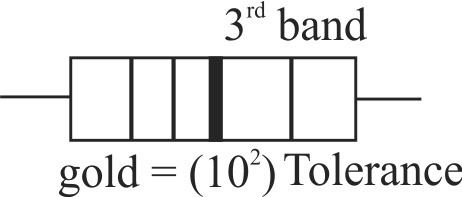357516
Consider the following statements.
I.
The resistance \(R\) of a conductor depends on its length \(l\) and cross-sectional area \(A\) through the relation \(R = \left( {\rho A} \right){\rm{/}}l\)
II.
Metals have low resistivity in the order of \({10^{ - 7}}\) SI units.
III.
In ionic crystals and electrolytic liquids, positive and negative ions are the current carriers.
Which of the following statement is/are correct?
357516
Consider the following statements.
I.
The resistance \(R\) of a conductor depends on its length \(l\) and cross-sectional area \(A\) through the relation \(R = \left( {\rho A} \right){\rm{/}}l\)
II.
Metals have low resistivity in the order of \({10^{ - 7}}\) SI units.
III.
In ionic crystals and electrolytic liquids, positive and negative ions are the current carriers.
Which of the following statement is/are correct?
357516
Consider the following statements.
I.
The resistance \(R\) of a conductor depends on its length \(l\) and cross-sectional area \(A\) through the relation \(R = \left( {\rho A} \right){\rm{/}}l\)
II.
Metals have low resistivity in the order of \({10^{ - 7}}\) SI units.
III.
In ionic crystals and electrolytic liquids, positive and negative ions are the current carriers.
Which of the following statement is/are correct?
357516
Consider the following statements.
I.
The resistance \(R\) of a conductor depends on its length \(l\) and cross-sectional area \(A\) through the relation \(R = \left( {\rho A} \right){\rm{/}}l\)
II.
Metals have low resistivity in the order of \({10^{ - 7}}\) SI units.
III.
In ionic crystals and electrolytic liquids, positive and negative ions are the current carriers.
Which of the following statement is/are correct?
357516
Consider the following statements.
I.
The resistance \(R\) of a conductor depends on its length \(l\) and cross-sectional area \(A\) through the relation \(R = \left( {\rho A} \right){\rm{/}}l\)
II.
Metals have low resistivity in the order of \({10^{ - 7}}\) SI units.
III.
In ionic crystals and electrolytic liquids, positive and negative ions are the current carriers.
Which of the following statement is/are correct?
